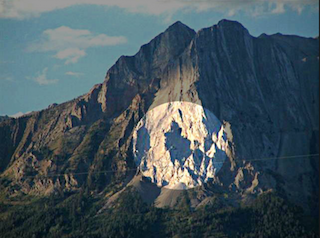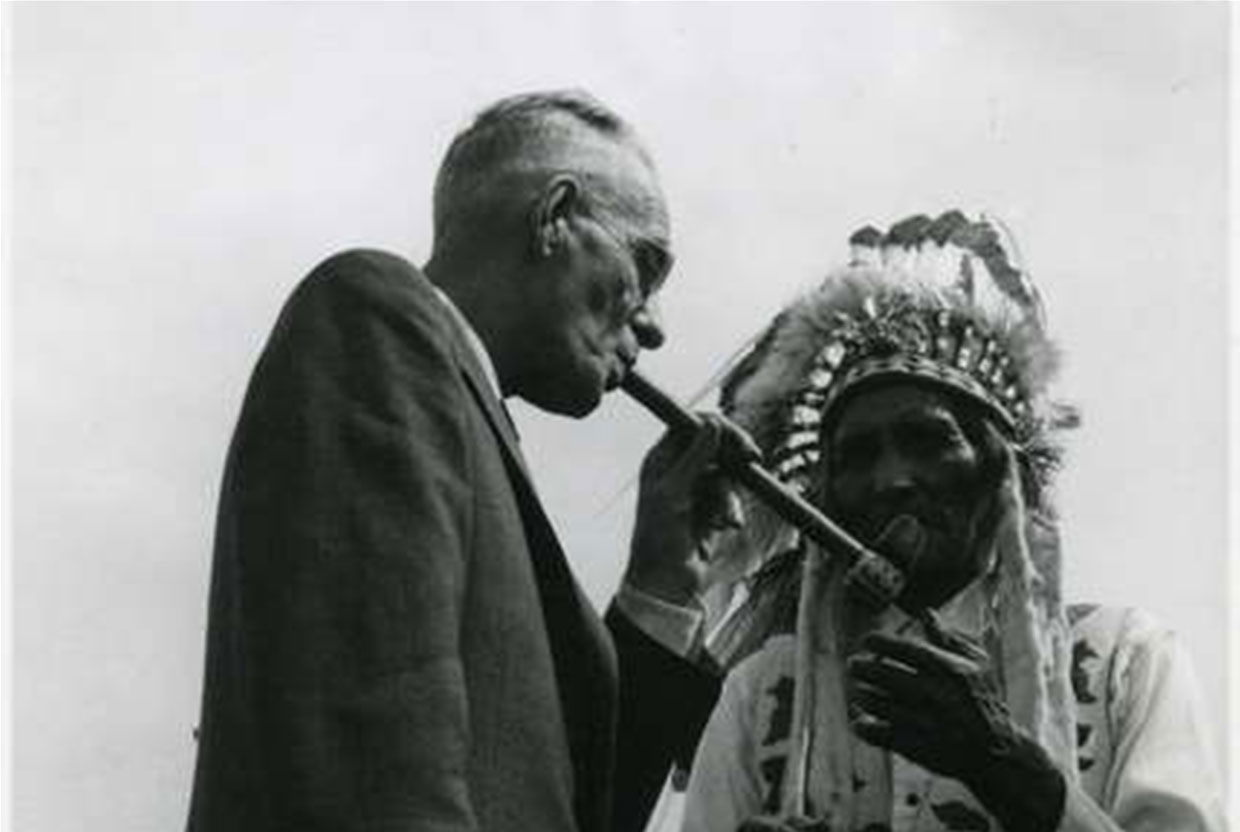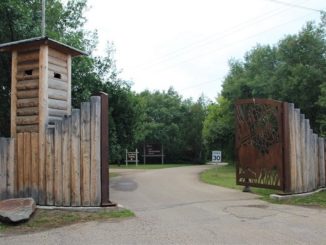
If you believe in legends you’ll want to know about the shadowy figure that lurks in the Elk Valley near the mountain town of Fernie, British Columbia. According to local lore William Fernie, the man the town is named after, was on a prospecting trip in the late 1800s when he observed a young Ktunaxa woman wearing a necklace made from shiny black stones. Immediately recognizing that the stones were coal he began a romantic relationship with the woman hoping to discover their origin. The Ktunaxa Chief, who was also the woman’s father, promised to show Fernie the coal seam if he would marry his daughter. Fernie agreed to the terms, but ultimately rebuffed the arrangement after learning of the coal’s whereabouts. Fernie’s refusal to marry his daughter angered the Chief and he placed a curse on the entire valley for all eternity.

Many residents didn’t give much thought to the alleged curse until adversity began to transpire within the valley. In 1902 one of Canada’s worst mining disasters devastated the town when 128 men were killed. Then two dreadful fires, one in 1904 and another in 1908, left the town smouldering. Finally, the Elk River flooded its banks in 1916 and again ravaged the distressed community.

Traditionally the Ktunaxa people avoided the Elk Valley altogether, believing it to be a bad place. Their legends speak of a Squirrel and his wife who mercilessly controlled the valley with their allies Raven and Ram. Together they would kill any who tried to enter their valley and refused safe passage to all. One day a young Ktunaxa boy with warrior-like strength manoeuvred his way into the valley where he eventually killed Squirrel and overpowered the others. The young boy, known as Yau Ke’Kam, felt the creatures were selfish for keeping the valley to themselves, so he declared any other who possessed such greed would meet the same fate. This tale may have helped shape the folklore surrounding the aforementioned curse.

Although no hard evidence exists to prove the authenticity of the curse it was real enough in the minds of the town’s people to request the curse be lifted. On August 15, 1964 Chief Ambrose Gravelle with members of the Ktunaxa Nation assembled together with Mayor James White and other town officials for a ceremony to officially remove the Fernie Curse. The authentic mountain town, with a penchant for incredible outdoor recreational opportunities, has been a flourishing community ever since.

Perhaps as a stark reminder of a darker time or simply an obscure illusion, the striking face of Mount Hosmer is the canvas that displays the eerie Ghostrider shadow at sunset on clear nights each summer and autumn. There are a number of interpretations of this phenomenon, but likely the two most popular are as follows. Some believe the shadowy character on horseback is the forsaken daughter being led home by her father, the irate Chief. Others conclude that the figure riding the horse is actually the incensed Chief keeping a vengeful eye on the valley below while his heartbroken daughter stands at his side. Whether the curse was real and the stories were true or its simply a fable inspired by unexplainable events their legends will live on in the shadows of the Rockies.




